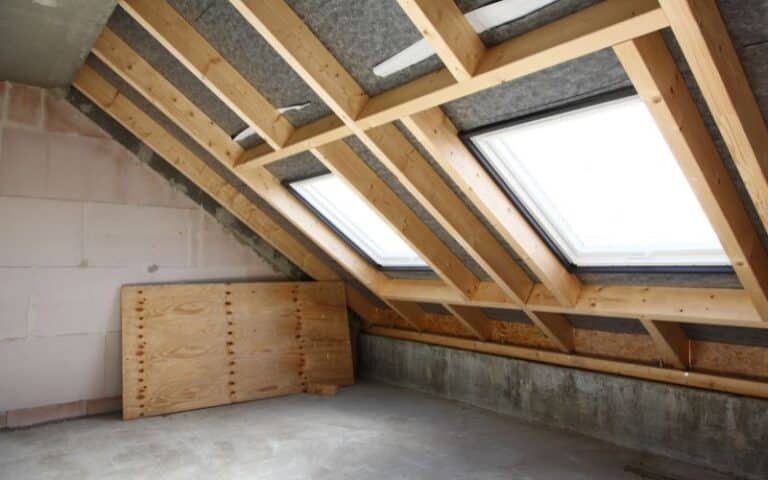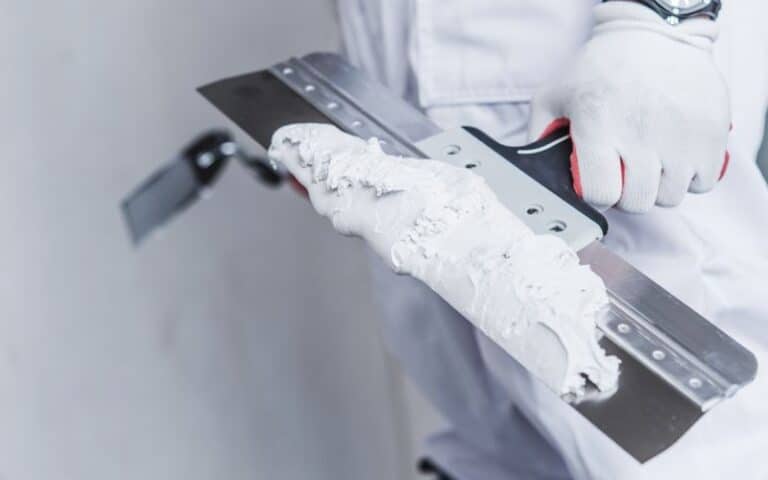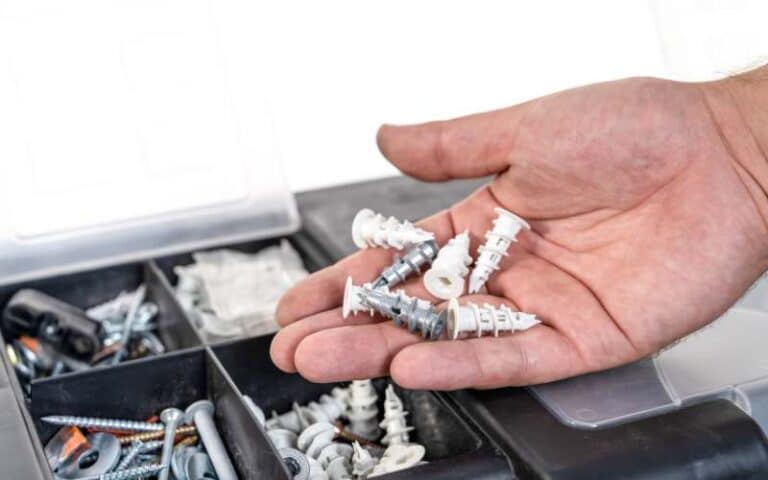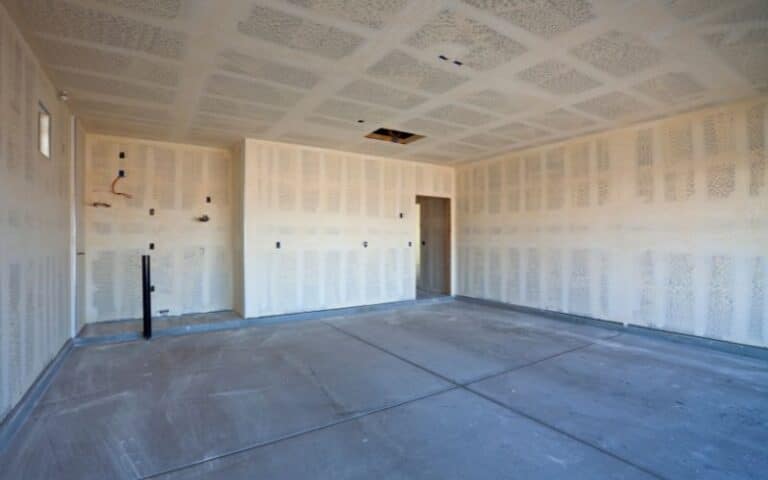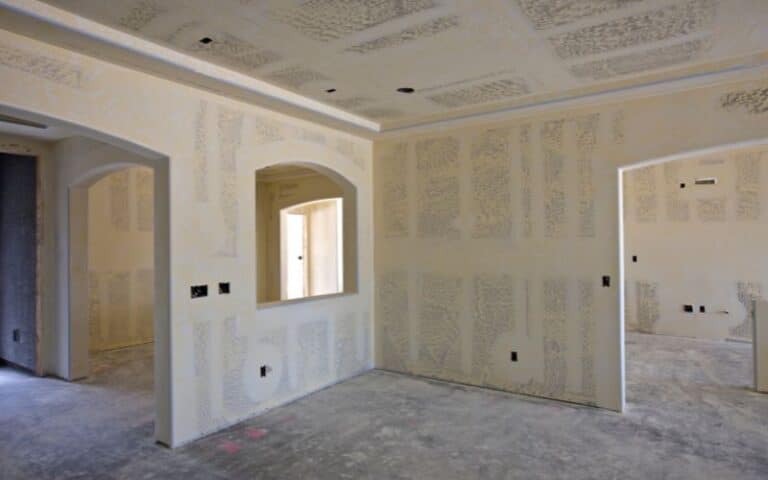Drywall is prevalent in buildings in these modern times because it is straightforward to work with, and many builders don’t find it challenging to install.
Apart from being easy to install, you can attain a clean finish without much stress with drywalls, and in cases where you need to make any repairs, it is made easier.
Even with how convenient drywalling is, you need to know which to apply drywall on, the walls or the ceiling first.
You should always install drywall on your ceiling before your walls because the drywall on the wall can support the ceiling, and also, you can fill in the tight corners quickly.
This article will explain why you should install drywalls on your ceilings first and highlight some common installation mistakes you should avoid.
Ready for a Drywall Quiz?
When Installing Drywall, Where Do You Start?

When installing drywall in your home, starting from the ceiling before the walls is essential.
There are a lot of advantages that come with installing drywalls on your ceilings first compared to if you do it the other way around.
Installing drywall on your ceiling before your walls would provide additional support and neat work done at the end.
Why Should We Drywall the Ceiling First Before the Walls?
Some other significant reasons to install drywall on your ceiling before the walls include;
#1. Neat Finishes
When you install drywall on your ceilings first before your wall, you will notice that the drywall on the wall would align perfectly with that on the ceiling.
It also provides your ceiling with extra support and rigidity. If you start drywalling with the walls, there will be more incidents of improper alignments, and you would want that.
#2. Working From the Top Is Faster and Easier
In not just drywall installation but standard installations around the house, the ceilings are always a bit more challenging because they are always above the head.
If you install your drywall from the ceiling first, you can complete most of the work. Every other part will be easier to work with.
#3. Supports the Ceiling More
When you install your drywall on your ceilings before the walls, you will notice that the walls would act as an extra layer of protection to hold them in place.
In cases where you install drywalls on the wall before the ceiling, you would notice that with time, the walls would start to crack and break because there is no additional support.
Does It Matter If Your Drywall Ceiling or Wall First?
Although it would be better and neater if your drywall had the ceiling before your wall, no law says the ceiling must have the drywall first.
So if you can come out with an elegant result and also find a way to keep supporting the ceiling, you can do it whichever way you like.
Tips on How to Install Drywall from the Ceiling to The Roof
Installing drywall on your ceilings and walls can be very intimidating, especially If you do this all by yourself for the first time.
You don’t have to worry because below are some tips for installing drywall on your walls and ceiling;
#1. Place the Studs First
It would help if you always started paneling from the stud because this would help create a firmer foundation.
These studs would provide extra support to the ceiling and drywall as it also acts as a fastening point for you.
#2. Take Note of the Direction
Different studs have another direction in which you install them. If you use a wooden stud, you should hang your drywalls horizontally.
If you have a metallic stud, you should hang it vertically. That way, you adhere to the fire code and ensure that your drywall has more contact with the stud.
#3. Use Bigger Sheets
Using bigger sheets when installing your drywall is preferable. It would help eliminate the need for more screwing and tacking for multiple pieces.
One big sheet is worth more than two or smaller sheets. Also, when you use nigger sheets, your work appears neater.
You would not need to be keeping up with larger sheets as much as you would with more miniature sheets.
#4. Move Around the Room
After installing your drywall to the ceilings, you should start moving that way.
And you would add a lot of support around the room with the wall drywall; that way, you would go to the ceiling.
#5. Ensure Tight Installations
You should always make sure that you install one panel tightly against the next and also press it down firmly to the structure under it.
Ensure you install the screws tightly, but it shouldn’t be overly tight that it digs too deep into the structure underneath it.
What Are the Most Common Drywall Installation Mistakes?
As much as art installing your drywalls is, you can easily mix it all up and spend lots of money to fix whatever problem.
It is essential to note inevitable mistakes you would want to avoid when installing your drywalls to save you money and time.
Below are some common drywall installation mistakes you wouldn’t want to make;
#1. Screwing too Deeply
This problem is common, and you must avoid it when installing drywalls.
When you install your screws too deep, it harms the holding power of the screw, and it can also break the drywall’s paper surface.
To prevent this from happening, ensure that you screw only about a quarter or half turn past the surface paper.
Many drills have a clutch that can help you determine when to stop drilling. Getting this can help you avoid this issue.
#2. Sanding Your Drywalls Too Much
It’s another problem some people encounter with their drywall installations. Before you sand your drywall, be very cautious, you have to sand it enough and not too much.
Over-sanding would damage the seam; you should sand your drywall close to a light source, so you have a better view of what you are working on.
#3. Improper Frame Support
When fastening drywall to the frame, many people do not add some backings to support the drywall hanging.
Many people not used to doing this would screw to the inside corners, resulting in weaker support.
Doing this would cause damage and also lead to an improper drywall installation. So, if you do not have adequate support, add a two-by-four along the initial frame.
#4. Fastening Incorrectly
One of the few things worse than not properly aligning your drywall with the frame is improper fastening.
You need to make markings on the spot where you need to screw before you screw them.
This way, you are sure of not missing the frame, especially if you are not a skilled professional.
#5. Use Tapered Edges on the Outside Corners
An easy mistake to make is leaving the tapered edges facing outwards when hanging the drywall with an outside edge.
Doing this would make installation a lot more complicated since it is rounded. Installing tapered edges around the corner would make it much more challenging to bead.
#6. Creating Unnecessary Joints
This is a widespread mistake that amateur drywall installers experience. They may want to cut costs and settle for cheaper and smaller materials for the job.
Even if this seems more affordable, they will spend more time, energy, and money to make this work.
Working around is always safer and more accessible when you opt for fewer sheets.
The table below contains the common problems of drywalls and their possible fixes.
| Common Drywall Problems | Possible Fixes |
|---|---|
| Gaps between the drywall sheets | Force in drywall compounds into the gaps. |
| The drywall is hanging off the stud | Cut it vertically so it hits the center point of the stud. |
| Over-sanded drywall paper | Prevent this by installing a light at a low angle to check the sanding process. |
| Driving drywall screws too far | Drive the screw head directly to the surface of the paper cover. |
| Holes on boxes are not aligning. | It would be best to run electric cables first and twist the ends together. |
FAQs
Do You Hang Drywall Ceiling Before Walls?
It would help if you hang your ceiling drywalls before your walls.
Why Start Drywall at the Top of the Wall?
By doing this, the drywall at the top could perfectly support the ceiling drywalls at the edges.
Why Don’t People Hang Drywall Vertically?
Hanging the drywall horizontally would help to hide uneven studs.
Do You Use the Same Drywall for Wall and Ceiling?
The size of the drywall you should use on the interior wall is ½ -inch drywall, while on the ceiling, it should be 5/8 -inch drywall thickness.
Does Drywall Touch the Floor?
It would be best if you always left a ½ -inch gap at the floor and did not go all the way down, which permits floor extension without cracking the drywall.

